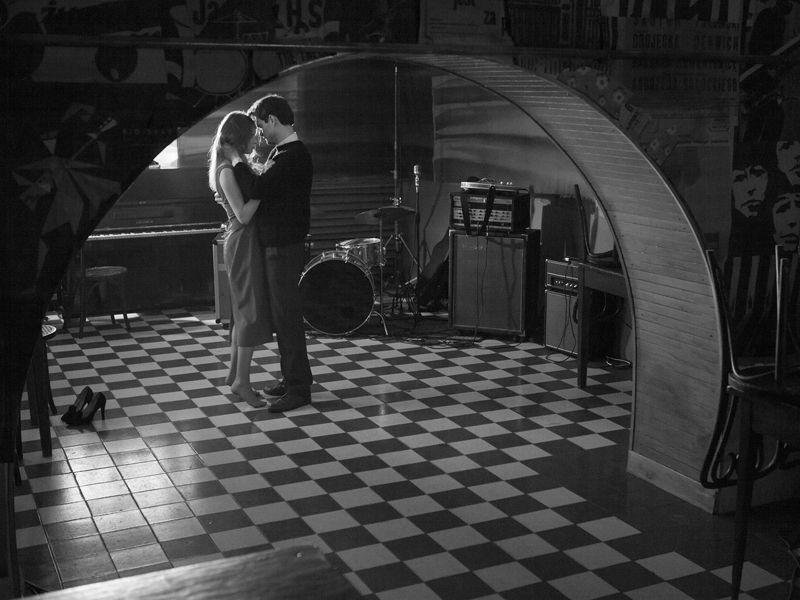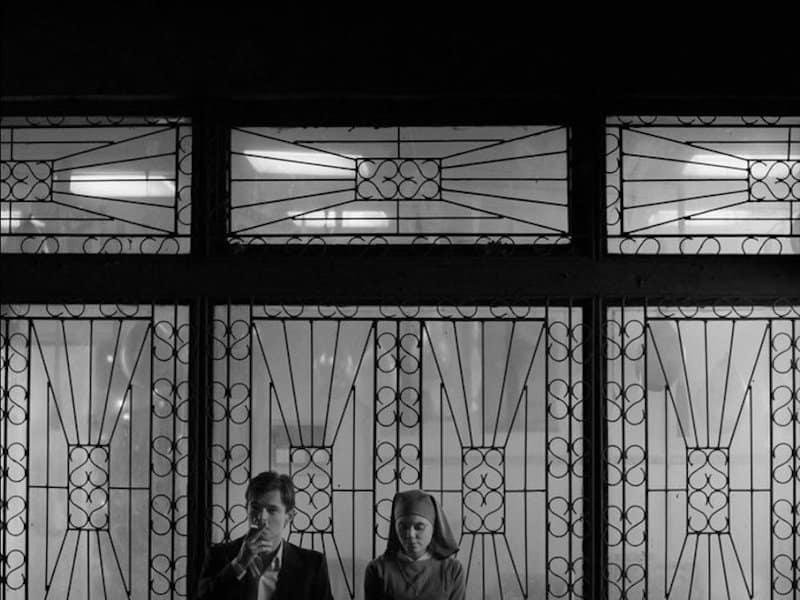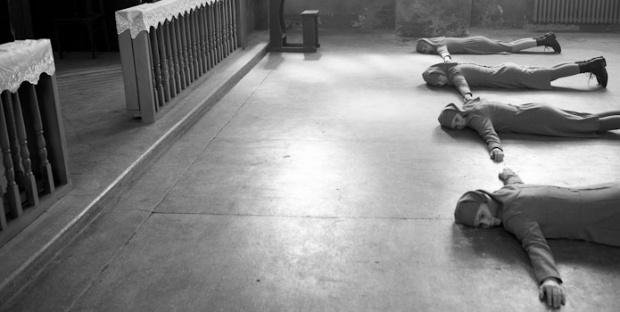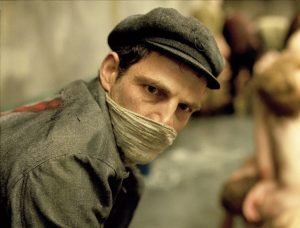Uncovering the Mastery of Cinematography in Paweł Pawlikowski’s ‘Ida’
Paweł Pawlikowski’s “Ida” is a masterpiece that showcases the power and beauty of cinematography. In this film, Pawlikowski uses the visual language to capture the essence of the story and convey the emotions of the characters. From the stunning black and white shots to the unconventional framing and compositions, every aspect of the cinematography in “Ida” is a work of art. In this article, we will delve into the mastery of cinematography in Paweł Pawlikowski’s “Ida” and explore how it elevates the film to a whole new level.
Paweł Pawlikowski’s “Ida” is a masterpiece that showcases the power and beauty of cinematography. In this film, Pawlikowski uses the visual language to capture the essence of the story and convey the emotions of the characters. From the stunning black and white shots to the unconventional framing and compositions, every aspect of the cinematography in “Ida” is a work of art. In this article, we will delve into the mastery of cinematography in Paweł Pawlikowski’s “Ida” and explore how it elevates the film to a whole new level.

Introduction to Paweł Pawlikowski’s ‘Ida’
“Ida” is a 2013 Polish film directed by Paweł Pawlikowski that offers an introspective look at the haunting history of Poland during the Second World War. The film revolves around the character of Anna, a novice nun, who discovers her past and family roots while preparing to take her vows. Pawlikowski’s stunning cinematography captures the stark beauty of the Polish countryside and the solemnity of the convent, perfectly complementing the intense performances of the cast. With its richly layered themes of identity, faith, and history, “Ida” is a masterful piece of cinema that leaves an indelible impression on the audience.
Importance of cinematography in film-making
Cinematography is an essential aspect of film-making that greatly influences the final product. In Paweł Pawlikowski’s ‘Ida’, the cinematography plays a crucial role in conveying the mood and themes of the story. The black and white cinematography captures the austere and bleak environment of 1960s Poland, while the use of static shots and long takes emphasizes the stillness and contemplative nature of the protagonist, Ida. The cinematography also brings out the contrast between Ida’s sheltered life in the convent and the harsh reality of the outside world. Through the expert use of cinematography, Pawlikowski creates a visually stunning and emotionally resonant film that showcases the importance of this art form in film-making.
Cinematographer’s role in ‘Ida’
In Paweł Pawlikowski’s ‘Ida’, the cinematographer played a crucial role in enhancing the film’s visual storytelling. Lukasz Zal’s use of black and white cinematography, with its stark contrast and deep shadows, perfectly captured the film’s somber and melancholic tone. The wide-angle shots and the use of negative space helped to emphasize the isolation and loneliness of the film’s characters. Zal’s cinematography also made use of static and minimalist camera movements to create a sense of timelessness and introspection. Overall, the cinematographer’s work in ‘Ida’ contributed greatly to the film’s success in telling a powerful and emotionally resonant story.

Use of black and white cinematography
In Paweł Pawlikowski’s ‘Ida’, the use of black and white cinematography plays a crucial role in enhancing the visual storytelling of the film. The stark contrast between the shades of black and white creates a hauntingly beautiful atmosphere, perfectly reflecting the somber tone of the story. The simplicity of the color scheme also draws attention to the intricate details of the characters and the surroundings, allowing the viewers to immerse themselves in the film’s world. The use of black and white cinematography in ‘Ida’ is a testament to the power of visual storytelling and the importance of every detail in the creation of a cinematic masterpiece.
Framing and composition in ‘Ida’
Framing and composition play a crucial role in enhancing the visual storytelling of Paweł Pawlikowski’s ‘Ida’. The film’s use of a 4:3 aspect ratio and black-and-white cinematography creates a sense of austerity and timelessness that perfectly suits the story’s historical setting. Pawlikowski’s careful framing of shots also helps to convey a sense of emotional distance between the characters, as well as to emphasize the starkness of their surroundings. Additionally, the film’s composition is marked by a number of static shots and long takes, which allow the audience to fully absorb the film’s haunting atmosphere and subtle character development. Overall, the cinematography in ‘Ida’ is a masterclass in how framing and composition can heighten the emotional impact of a story.
Lighting techniques in ‘Ida’
In Paweł Pawlikowski’s ‘Ida’, the lighting techniques used are an essential element of the cinematography that adds to the film’s unique visual aesthetic. The film’s black and white cinematography is particularly striking, with the use of natural lighting in many scenes, creating a sense of realism and intimacy. Additionally, the use of shadows and contrast in certain scenes adds depth and visual interest to the frame. Overall, the lighting techniques employed in ‘Ida’ are a testament to the film’s exceptional cinematography and the attention to detail that went into its creation.

Symbolism conveyed through cinematography
In Paweł Pawlikowski’s ‘Ida’, the use of cinematography was crucial in conveying the symbolism of the film. The stark contrast between the black and white visuals emphasized the themes of religion and morality throughout the story. The camera angles and framing helped to visually represent the isolation and loneliness of the protagonist, Ida, as she grapples with her identity and faith. The symbolism of the film was intricately woven into every shot, highlighting the power of cinematography in enhancing the emotional impact of the story.
Camera movement in ‘Ida’
The use of camera movement in Paweł Pawlikowski’s ‘Ida’ is masterful. The camera often remains still, allowing the actors to deliver their performances with great emotional depth. However, when the camera does move, it is deliberate and impactful. The use of handheld camera in particular creates a sense of intimacy and immediacy that draws the audience into the characters’ emotional journeys. The slow pans and tilts also add a sense of elegance and contemplation to the film. Overall, the cinematography in ‘Ida’ is a testament to the power of a well-executed visual language in cinema.
Contrast between urban and rural settings
In Paweł Pawlikowski’s critically acclaimed film ‘Ida’, the contrast between urban and rural settings serves as a powerful backdrop to the story of a young novitiate nun in 1960s Poland who discovers her true identity. The film beautifully captures the stark differences between the bustling, modern city of Warsaw and the quiet, rural countryside where the protagonist’s family comes from. The use of black and white cinematography further emphasizes this contrast, with the urban scenes appearing cold and sterile, while the rural scenes are warm and inviting. This contrast not only serves as a visual representation of the protagonist’s internal conflict but also highlights the cultural and societal changes happening in Poland at that time.
Conclusion on the impact of cinematography in ‘Ida’
In conclusion, the cinematography in Paweł Pawlikowski’s ‘Ida’ has a profound impact on the storytelling and the emotional depth of the film. The use of black and white photography creates a stark contrast between the characters and their surroundings, drawing attention to the bleakness of post-World War II Poland. The deliberate framing of shots and the use of long takes also add to the visual narrative, conveying the characters’ internal struggles and their relationship with each other and the world around them. Overall, the cinematography in ‘Ida’ is an essential element of the film’s success, making it a visually stunning and emotionally resonant piece of cinema.
For more information about Cinematography in Paweł Pawlikowski’s ‘Ida’, including movie details, cast information, etc..
check out the filmaffinity page.



